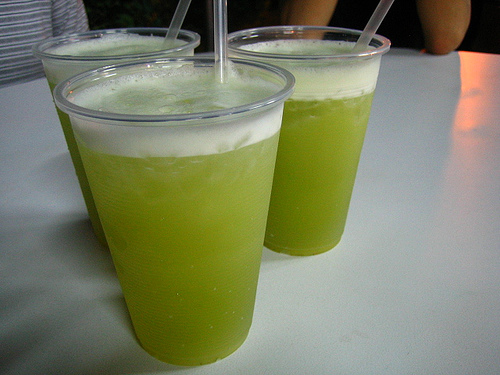|
Guarapa
Guarapo or guarapa (Portuguese: garapa) may refer to: *Sugarcane juice *For the palm-tree sap also known as guarapo, see Miel de palma *Guarapo (drink) a fermented alcoholic drink in Latin American cuisine *''Guarapo'', a 1989 film of Juan Luis Galiardo Juan Luis Galiardo Comes (2 March 1940 – 22 June 2012) was a Spanish television, theater and film actor. Life The eldest of six children, Juan Luis Galiardo Comes was born in San Roque, Cádiz, but spent most of his childhood and youth in ... * ''Garapa'' (film), a 2009 film by José Padilha {{Disambiguation ... [...More Info...] [...Related Items...] OR: [Wikipedia] [Google] [Baidu] |
Sugarcane Juice
Sugarcane juice is the liquid extracted from pressed sugarcane. It is consumed as a beverage in many places, especially where sugarcane is commercially grown, such as Southeast Asia, the Indian subcontinent, North Africa, and Latin America. Sugarcane juice is obtained by crushing peeled sugar cane in a mill and is one of the main precursors of rum. In the United States where processed sugarcane syrup is used as a sweetener in food and beverage manufacturing, "evaporated cane juice" is considered by the Food and Drug Administration (FDA) to be a misleading term for "sugar" on product labels because the FDA regards "juice" as a liquid derived from fruits or vegetables; the preferred term is "cane sugar". Health risks Raw sugar cane juice can be a health risk to drinkers due to the unhygienic conditions under which it is prepared in some countries with lower health standards. There are some diseases that can be transmitted by raw sugar-cane, such as Leptospirosis. In Brazil, sug ... [...More Info...] [...Related Items...] OR: [Wikipedia] [Google] [Baidu] |
Miel De Palma
Miel de palma (lit. palm honey, also palm syrup) is an edible sweet syrup produced from the sap of a number of palms. It is produced in the Canary Islands and coastal regions of South America. Species In the Canary Islands, palm syrup (''miel de palma'') is produced from the Canary Island Date Palm (''Phoenix canariensis''). In Chile, palm syrup (''miel de palma'') is produced from the endangered Chilean Wine Palm (''Jubaea chilensis'').C. Michael Hogan. 2008''Chilean Wine Palm: Jubaea chilensis'', GlobalTwitcher.com, ed. N. Stromberg Other species used include the coconut palm, sugar palm, and palmyra palm. Production in the Canary Islands Most guarapo and miel de palma production occurs in the municipality of Vallehermoso on La Gomera. The process of collecting sap from the palm and concentrating it into syrup is similar in many ways to the process used for maple syrup. The sap, known as ''guarapo'' or ''garapa'', is collected from a bowl-shaped depression cut into the crown of ... [...More Info...] [...Related Items...] OR: [Wikipedia] [Google] [Baidu] |
Guarapo (drink)
Guarapo (from the Quechuan languages, Quechua ''warapu'') is a Latin Americans, Latin American Fermentation, fermented drink derived from sugarcane juice. "Guarapo" is also a Spanish language, Spanish word for sugarcane juice itself, but in much of Latin America it is used to refer specifically to the fermented product. The Quechua word ''warapu'' signifies the juice of crushed cane. Variations Mexico In the Mexican state of Tabasco, during the Spanish colonial period in the 16th century, when sugarcane was introduced from the Caribbean, the Chontal Maya people began to produce the drink by fermenting sugarcane juice. It became very popular among the Indigenous population, who consume it primarily at parties and celebrations, including Day of the Dead. They also produce ''guarapo de maíz'', or corn guarapo, which is made by fermenting toasted corn, panela, and water. Cuba In Cuba, the drink is prepared in rural communities by dissolving honey or panela in water and ferme ... [...More Info...] [...Related Items...] OR: [Wikipedia] [Google] [Baidu] |
Latin American Cuisine
Latin American cuisine is the typical foods, beverages, and cooking styles common to many of the countries and cultures in Latin America. Latin America is a highly diverse area of land whose nations have varying cuisines. Some items typical of Latin American cuisine include maize-based dishes arepas, pupusas, tacos, tamales, tortillas and various salsas and other condiments (guacamole, pico de gallo, mole, chimichurri, chili, aji, pebre). Sofrito, a culinary term that originally referred to a specific combination of sautéed or braised aromatics, exists in Latin American cuisine. It refers to a sauce of tomatoes, roasted bell peppers, garlic, onions and herbs. Rice and beans are also staples in Latin American cuisine. Latin American beverages are just as distinct as their foods. Some of the beverages can even date back to the times of the Native Americans. Some popular beverages include coffee, mate, hibiscus tea, horchata, chicha, atole, cacao and aguas frescas. Desserts i ... [...More Info...] [...Related Items...] OR: [Wikipedia] [Google] [Baidu] |
Juan Luis Galiardo
Juan Luis Galiardo Comes (2 March 1940 – 22 June 2012) was a Spanish television, theater and film actor. Life The eldest of six children, Juan Luis Galiardo Comes was born in San Roque, Cádiz, but spent most of his childhood and youth in Badajoz, where his father had moved following working opportunities. After finishing his secondary education in Seville, Galiardo studied Agricultural Engineering at the University of Madrid.D’Lugo, ''Guide to the Cinema of Spain'', p. 228 He abandoned his studies in 1961, to enroll the following year at Spain's National Film School (EOC) where he trained as an actor. He began his career working in the theater under the direction of José Luis Alonso de Santos in the theater María Guerrero. With some fellow actors he founded the T.E.I. (Independent Experimental Theatre), directed by Miguel Narros. Galiardo made his film debut in the leading role in Julio Diamante's film ''El arte de vivir'' ''(The Art of Living'') (1965). In the next si ... [...More Info...] [...Related Items...] OR: [Wikipedia] [Google] [Baidu] |
